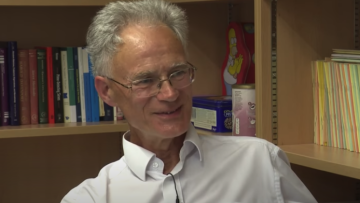16:00
Tangent spaces of Schubert varieties
Abstract
Schubert varieties in (twisted) affine Grassmannians and their singularities are of interest to arithmetic geometers because they model the étale local structure of the special fiber of Shimura varieties. In this talk, I will discuss a proof of a conjecture of Haines-Richarz classifying the smooth locus of Schubert varieties, generalizing a classical result of Evens-Mirkovic. The main input is to obtain a lower bound for the tangent space at a point of the Schubert variety which arises from considering certain smooth curves passing through it. In the second part of the talk, I will explain how in many cases, we can prove this bound is actually sharp, and discuss some applications to Shimura varieties. This is based on joint work with Pappas and Kisin-Pappas.


